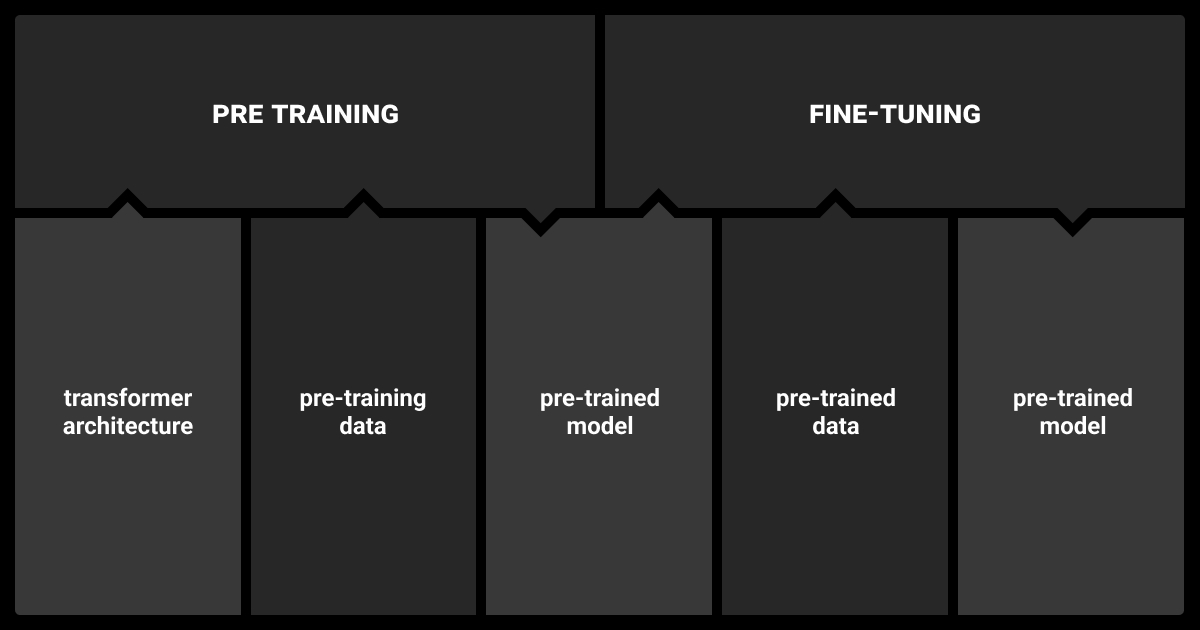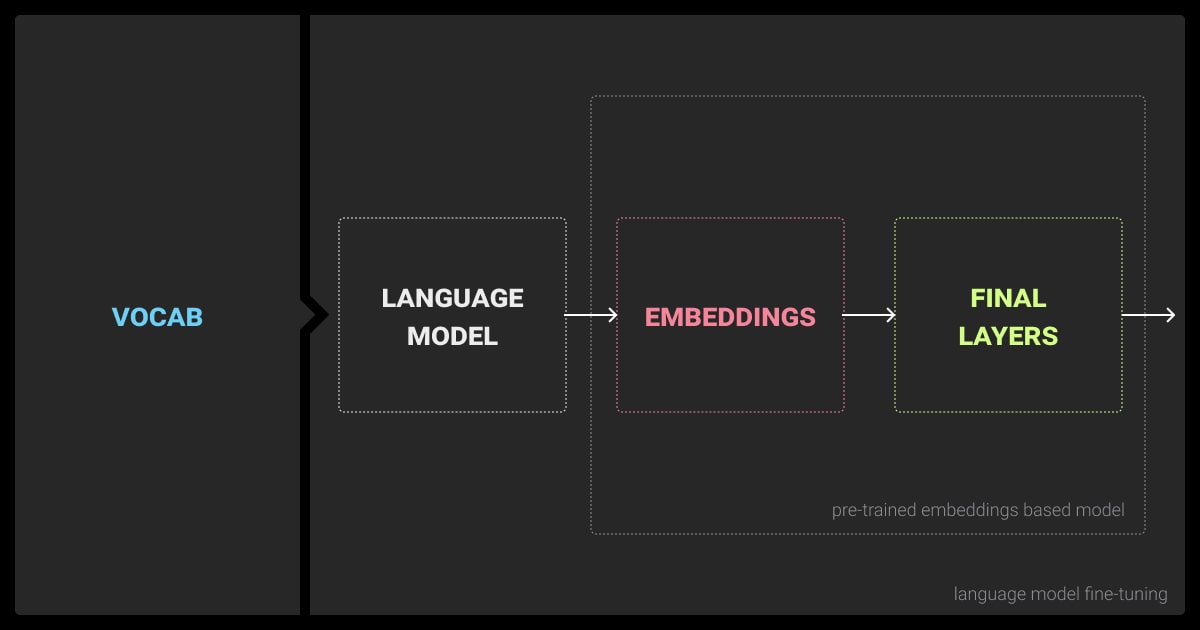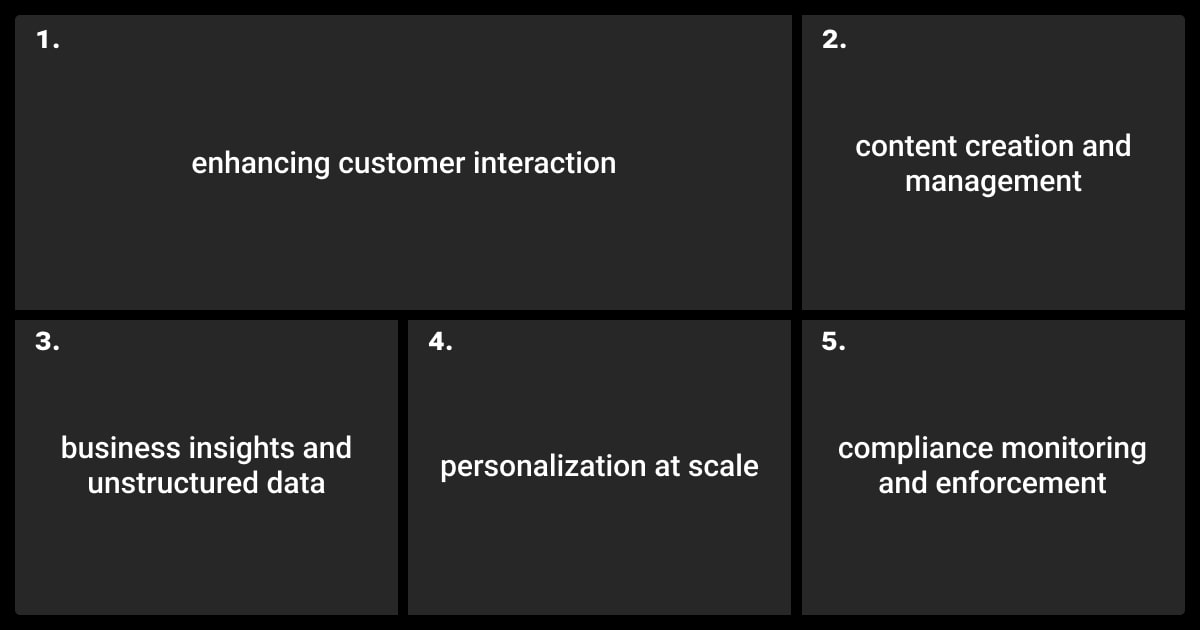Pre-Training vs Fine Tuning: Choosing the Right Approach

TL;DR
Key Concepts: Pre-Training vs Fine-Tuning

The performance of Large Language Models (LLMs) lies on two critical processes: pre-training and fine-tuning. Understanding these stages allows designing models that are both versatile and highly effective for specific tasks.
Pre-training equips the model with a broad understanding of language, while fine-tuning refines its capabilities to address specific domain-related tasks. Let’s break down these concepts further.
What is Pretraining?
Pre-training is the foundation of modern LLMs, using large datasets and unsupervised learning to identify language patterns and create versatile models.
Key Pre-Training Techniques
These techniques allow pre-trained models to develop a general understanding of language. They become adaptable for downstream tasks.
Advantages of Pre-Training
Scalability: Models trained on diverse datasets can generalize across multiple tasks.
Reusability: Once pre-trained, the model serves as a foundation for various fine-tuning efforts.
Cost Savings in Downstream Tasks: Pre-trained models significantly cut resource costs by eliminating the need to build task-specific training models from the ground up.
Challenges of Pre-Training

Pre-training can be computationally expensive, often requiring weeks on specialized hardware. Moreover, the quality of pre-trained models heavily depends on the datasets used. If the data is noisy or biased, the model’s performance will reflect those flaws. Ensuring high-quality data through reliable data annotation services is essential to mitigate these issues and improve model outcomes.
Pre-training is resource-intensive, requiring massive datasets and computational power. It’s ideal for creating general-purpose models but impractical for many businesses due to its costs and time demands.
What is Fine-Tuning?
LLM fine-tuning refines pre-trained models using smaller, labeled datasets to optimize performance on tasks like sentiment analysis or translation.
Key Fine-Tuning Techniques
Fine-tuning techniques provide flexibility in tailoring models for a wide range of real-world applications while balancing resource constraints.
Advantages of Fine-Tuning
Precision: Adapts models for domain-specific or task-specific accuracy.
Efficiency: Requires fewer resources compared to pre-training.
Challenges of Fine-Tuning
Small datasets can lead to overfitting.
Careless fine-tuning risks erasing the general knowledge learned during pre-training.
Differences Between Pre-Training vs Fine-Tuning
While both pre-training and fine-tuning aim to enhance model capabilities, they differ significantly in scope, resources, and application.
Pre-training focuses on creating a versatile knowledge base, while fine-tuning hones in on the specifics required for real-world applications.
Pre Training vs Fine Tuning: Which One to Use?
Selecting the right approach — pre-training or fine-tuning — depends on your objectives, available resources, and the complexity of the task. Understanding the strengths of each method ensures efficient model development and deployment.
When to Use Pre-Training
Pre-training is ideal when building a foundational model from scratch. It can also be used for general-purpose use across multiple domains. This stage involves extensive resource allocation and is typically undertaken by large organizations or research labs.
Development of Foundational Models: Creating models like GPT or BERT that can later be adapted for a variety of tasks.
Applications Requiring Broad Coverage: Ideal for tasks in multilingual or multi-domain environments where general knowledge is crucial.
Advancing State-of-the-Art: For research projects aimed at pushing the boundaries of AI.
As an example, OpenAI’s GPT-4 is pre-trained on massive datasets to perform various tasks. This foundational pre-training allows users to apply GPT-4 without needing extensive fine-tuning for common tasks.
When to Use Fine-Tuning
Fine-tuning is more suitable when a pre-trained model exists, and the goal is to customize it for a specific domain or task. This approach optimizes resources by leveraging the foundational knowledge of a pre-trained model.
Task-Specific Optimization: Adapting a pre-trained model for applications such as sentiment analysis, legal document review, or medical diagnosis.
Low-Resource Training Environments: Organizations with limited datasets or computational power can use fine-tuning to achieve high accuracy.
Domain-Specific Applications: Tailoring models for niche industries, such as finance or healthcare.
An example of fine-tuning can be a healthcare startup BERT model. It's fine-tuned on medical records to create a model capable of identifying key patient information, such as symptoms and treatments.
Fine-tuning allows you to take an existing pre-trained model and mold it to your specific needs with focused, relevant data. It’s quicker, cheaper, and a lot more efficient for most use cases.
Choosing the Right Approach
The decision to pre-train or fine-tune depends on key factors, such as:
Resource Availability
Pre-training demands extensive compute resources and data, while fine-tuning is more cost-effective.
Task Complexity
Fine-tuning is sufficient for most task-specific use cases, but pre-training is required to build foundational capabilities.
Time Constraints
Pre-training takes weeks or months, whereas fine-tuning can be completed in hours or days.
For tasks requiring high precision and domain-specific adaptation, LLM fine tuning offers an efficient way to leverage pre-trained models and customize them for specific business or research needs.
The choice between pre-training and fine-tuning boils down to the problem’s complexity, available resources, and the need for specificity. Fine-tuning is often faster and more practical for businesses targeting niche applications.
Combined Strategies
Sometimes, the best results are achieved by combining both approaches:
Intermediate Pre-Training
Pre-train on domain-specific datasets (e.g., financial data) before fine-tuning for a specific task (e.g., fraud detection).
Parameter-Efficient Fine-Tuning
Techniques like Adapters can be used to fine-tune specific layers without requiring full fine-tuning.
Geospatial Annotation for Domain-Specific Models
Models focused on mapping or geographic tasks can benefit from pre-training on datasets with geospatial annotation, followed by fine-tuning to adapt to applications like urban planning or environmental monitoring.
Pre Training vs Fine Tuning Metrics
Metrics evaluate performance in pre-training and fine-tuning, ensuring robust foundational models and task-specific accuracy.
The Role of Metrics in Model Development
Each metric offers distinct insights into model performance:
Pre-training Metrics
Focus on ensuring that the model learns generalized, diverse representations of language without overfitting to specific patterns. Proper data annotation is crucial here, as it directly impacts the quality of datasets used for training.
Fine-Tuning Metrics
Prioritize task-specific accuracy, balancing precision and recall to meet specific use-case demands. BLEU, ROUGE, and F1 scores gauge how well the fine-tuned model adapts to its intended tasks.
Why Metrics Matter
Optimized Learning: Monitoring loss functions ensures that both pre-training and fine-tuning converge efficiently without wasting resources.
Real-World Alignment: Task-specific metrics like BLEU or F1 scores verify the model’s readiness for deployment.
Avoiding Pitfalls: Validation loss and diversity metrics help mitigate overfitting and ensure robustness, even in edge cases.
With well-selected metrics, teams can strike a balance between pre-training’s generalization and fine-tuning’s precision, creating versatile yet task-ready models.
Pre Training vs Fine Tuning Applications
Pre-training and fine-tuning enable a wide array of applications across industries. While pre-training provides the foundation for versatile language understanding, fine-tuning tailors these models for specialized tasks. Together, they form a powerful toolkit for creating adaptable, high-performing AI systems.
Applications Powered by Pre-Training
Pre-trained models power general-purpose and domain-specific applications, such as image recognition or medical imaging, with minimal customization.
Partnering with a reputable data annotation company can ensure clean, structured, and diverse data, which significantly enhances the performance of foundational models.
Pre-training applications are particularly effective when broad adaptability and foundational capabilities are critical, such as in multilingual tools or industry-agnostic AI systems.
Fine-Tuning Applications

Fine-tuning adapts pre-trained models to meet specific requirements. This process is especially useful for targeted tasks requiring high accuracy or domain relevance. For example, fine-tuned models are commonly used in automatic speech recognition systems to improve accuracy for specific accents, dialects, or industries.
By focusing on task-specific datasets, fine-tuning ensures these models perform optimally in their intended environments.
Fine-tuning ensures precision and relevance, making it indispensable for businesses seeking high-impact, task-specific AI tools.
Pre Training vs Fine Tuning: Combined Applications
In many real-world scenarios, pre-training and fine-tuning work in synergy. Teams often use pre-trained models as a foundation. They add fine-tuning to achieve high performance in specific applications.
Customer Support Systems: A pre-trained GPT model is fine-tuned to understand a company’s FAQs. It also works with the tone of voice and policies, enabling seamless customer interactions.
Legal Document Analysis: Pre-trained models are first specialized on legal texts (domain-adaptive pre-training). They are fine-tuned for tasks like clause extraction or compliance checks.
Financial Predictions: Pre-training on financial news data followed by fine-tuning for specific stock market prediction models.
By leveraging both approaches, teams can build AI systems that balance general knowledge with domain-specific expertise.
About Label Your Data
If you choose to delegate data annotation, run a free pilot with Label Your Data. Our outsourcing strategy has helped many companies scale their ML projects. Here’s why:
No Commitment
Check our performance based on a free trial
Flexible Pricing
Pay per labeled object or per annotation hour
Tool-Agnostic
Working with every annotation tool, even your custom tools
Data Compliance
Work with a data-certified vendor: PCI DSS Level 1, ISO:2700, GDPR, CCPA
FAQ
What is pretraining and fine-tuning?
Pre-training is the process of teaching model foundational knowledge by exposing it to a vast and diverse dataset. This stage helps the model learn patterns, relationships, and structures inherent in language. Fine-tuning builds on this foundation by focusing the model on a specific domain. It uses a smaller and more targeted dataset to refine its capabilities.
What is the difference between fine-tuning and pre-training in generative AI?
Pre-training equips a model with broad, general knowledge by exposing it to large-scale, often unsupervised data. It’s like giving the model a well-rounded education. Fine-tuning narrows the focus, customizing the pre-trained model to excel at a particular task. For example, in summarization or sentiment analysis, it trains it on task-specific data.
Is fine-tuning done before pre-training?
No, fine-tuning is always done after pre-training. Pre-training lays the groundwork, providing the model with general language understanding. Fine-tuning then builds on that foundation, adapting the model for specialized applications or tasks.
Written by
Karyna is the CEO of Label Your Data, a company specializing in data labeling solutions for machine learning projects. With a strong background in machine learning, she frequently collaborates with editors to share her expertise through articles, whitepapers, and presentations.




